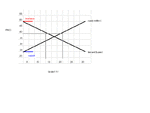JumpOff
1
- Messages
- 702
- Likes
- 14
Our esteemed FTSEbeater has written:
"Trendlines work because everyone sees them and know that the next time price hits that level, a reversal should happen, so they either rush to buy or sell depending if it is an uptrend or downtrend."
That's my understanding too. I know that if the price is trending up after a BO, I won't buy until it comes down very near to or touching the trendline. (and the opposite for a downtrend) It seems there really is no other safe entry point. I haven't had many successful trading days - but the few times I did, horizontal Support and Resistance 'S&R' and Trendlines 'TL''s both figured strongly in my decisions.
I've heard other folks say this is complete hogwash. For instance Sulong and Dbphoenix are looking at charts on this thread
http://www.trade2win.com/boards/showthread.php?goto=newpost&t=13013
and our extremely esteemed dbp says *again* that TLs do not provide support or resistance.
Anyone want to discuss the hows and whys of TLs? Are they just coincidental, or do they provide tradeable information?
JO
(Edited to fix a former keyboard spasm (*&eO V9 #Wlkj &^% 9&^% )
"Trendlines work because everyone sees them and know that the next time price hits that level, a reversal should happen, so they either rush to buy or sell depending if it is an uptrend or downtrend."
That's my understanding too. I know that if the price is trending up after a BO, I won't buy until it comes down very near to or touching the trendline. (and the opposite for a downtrend) It seems there really is no other safe entry point. I haven't had many successful trading days - but the few times I did, horizontal Support and Resistance 'S&R' and Trendlines 'TL''s both figured strongly in my decisions.
I've heard other folks say this is complete hogwash. For instance Sulong and Dbphoenix are looking at charts on this thread
http://www.trade2win.com/boards/showthread.php?goto=newpost&t=13013
and our extremely esteemed dbp says *again* that TLs do not provide support or resistance.
Anyone want to discuss the hows and whys of TLs? Are they just coincidental, or do they provide tradeable information?
JO
(Edited to fix a former keyboard spasm (*&eO V9 #Wlkj &^% 9&^% )
Last edited:

